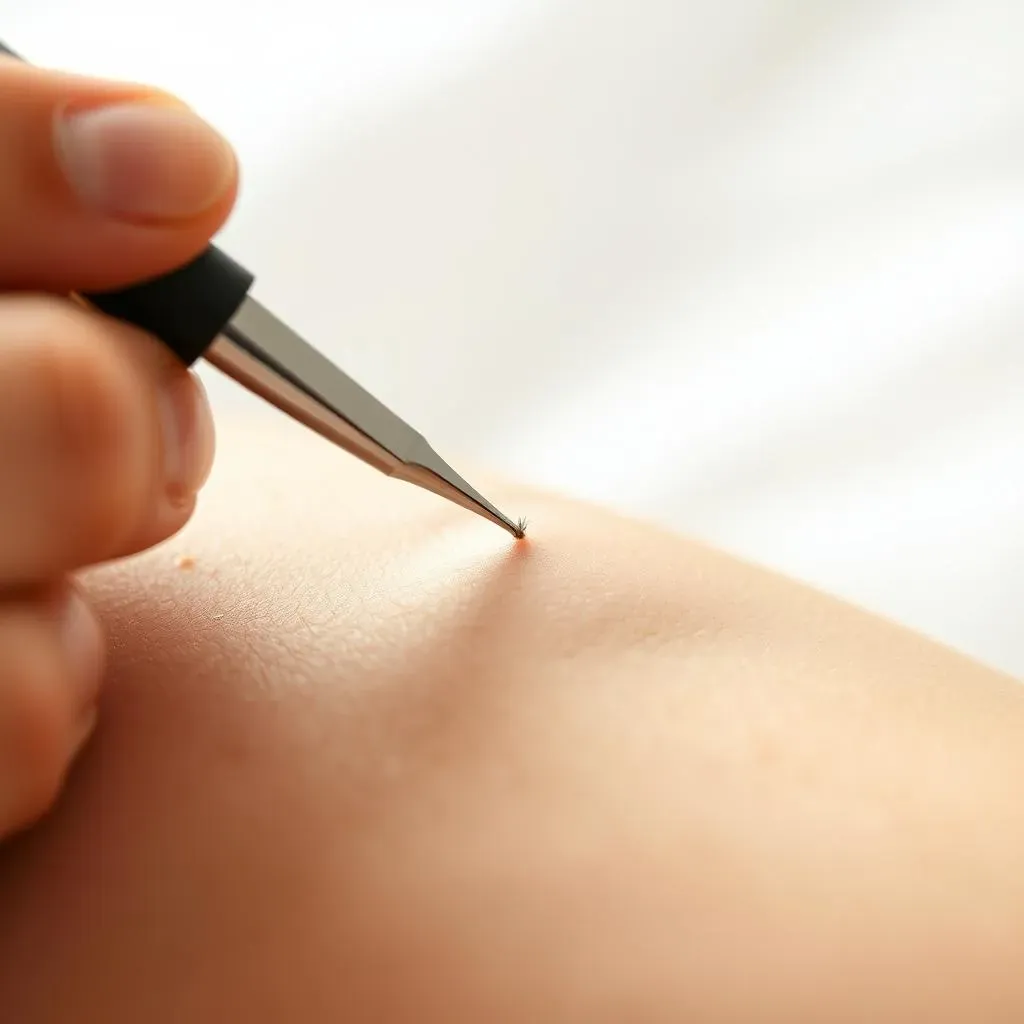Table of Contents
Ingrown pubic hair can be a painful and embarrassing condition, causing inflammation, itching, and discomfort. If you're struggling with ingrown pubic hair, you're not alone. Removing ingrown pubic hair requires a gentle and careful approach to avoid further irritation and potential infection. In this article, we'll explore the causes and symptoms of ingrown pubic hair, discuss various treatment options, and provide tips on how to remove ingrown pubic hair safely. We'll also delve into preventative measures to help you avoid future occurrences. Whether you're considering home remedies or professional solutions like laser hair removal, we'll guide you through the process of removing ingrown pubic hair and maintaining healthy, smooth skin. By the end of this article, you'll be equipped with the knowledge to effectively remove ingrown pubic hair and prevent it from coming back.
Understanding Ingrown Pubic Hair: Causes, Symptoms, and Risk Factors
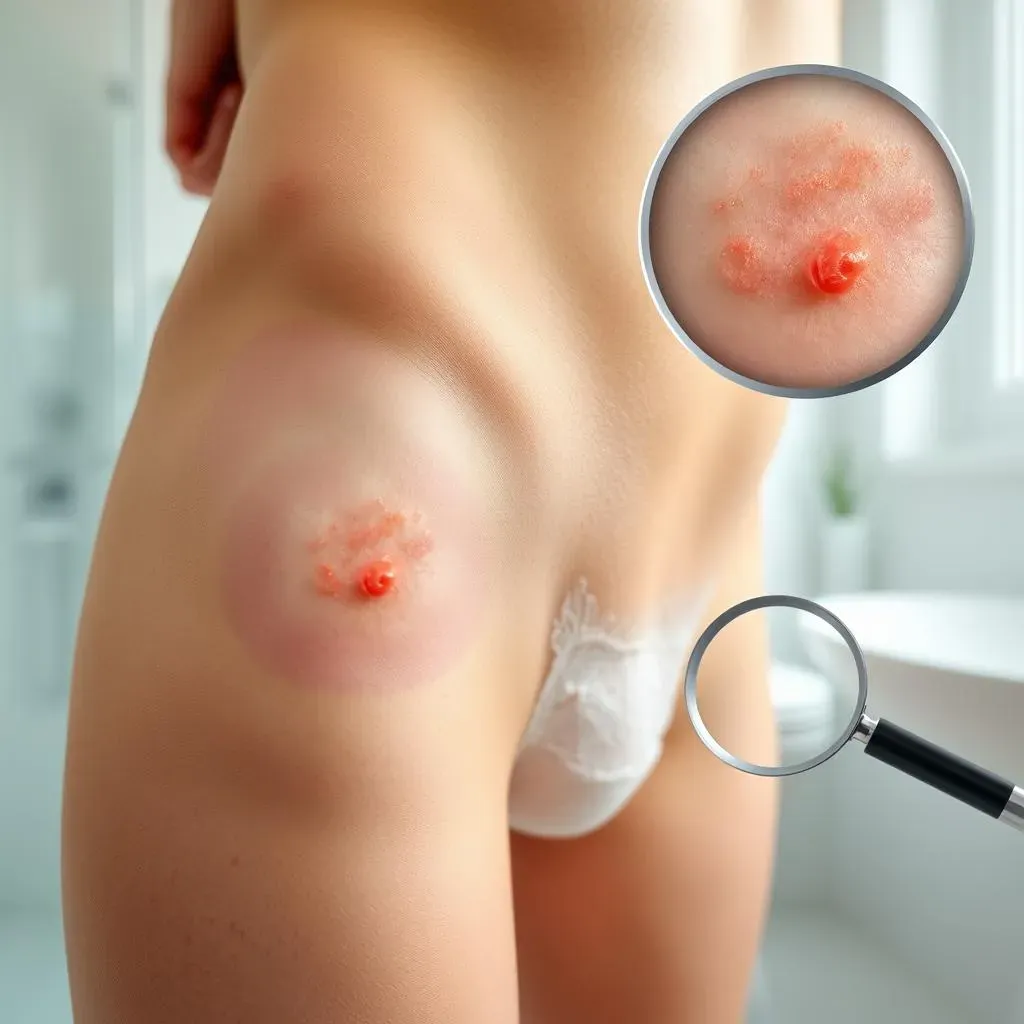
Understanding Ingrown Pubic Hair: Causes, Symptoms, and Risk Factors
What are Ingrown Pubic Hairs?
Ingrown pubic hairs occur when a hair grows back into the skin instead of outward, causing inflammation, redness, and discomfort. This can happen due to various reasons such as tight clothing, curly or coarse hair, and improper shaving techniques. Ingrown hairs can lead to infections, scarring, and hyperpigmentation if left untreated.
It's essential to identify ingrown pubic hairs early to prevent further complications. Symptoms include small, painful bumps or pimples, itching, and redness around the affected area. In severe cases, pus may be present, indicating an infection.
Symptoms | Description | Risk Factors |
|---|---|---|
Painful bumps or pimples | Small, inflamed bumps that can be tender to the touch | Tight clothing, curly hair |
Itching and redness | Discomfort and inflammation around the affected area | Improper shaving, poor hygiene |
Pus or discharge | Sign of infection, requiring medical attention | Poor aftercare, untreated ingrown hairs |
Causes and Risk Factors
Ingrown pubic hairs are more common in individuals with curly or coarse hair, as these hair types are more prone to bending back into the skin. Tight clothing can also contribute to ingrown hairs by causing friction and pushing the hair back into the skin. Improper shaving techniques, such as shaving too closely or using dull razors, can increase the risk of ingrown hairs.
- Cuts or nicks from shaving, allowing bacteria to enter the skin
- Exfoliating too aggressively, causing irritation
- Not moisturizing after shaving, leading to dry skin
- Genetic predisposition to ingrown hairs
Understanding these causes and risk factors is crucial in preventing ingrown pubic hairs. By adopting good hygiene practices, proper shaving techniques, and considering alternative hair removal methods, you can reduce your risk of developing ingrown pubic hairs.
Who is at Risk?
Certain individuals are more susceptible to ingrown pubic hairs due to their hair type, skin sensitivity, or lifestyle. For example, people with thicker or curlier hair are more prone to ingrown hairs. Additionally, those who shave regularly, especially in sensitive areas, are at a higher risk.
It's essential for individuals at risk to take preventative measures, such as exfoliating gently, using sharp razors, and applying soothing creams after shaving. By being proactive, you can minimize the occurrence of ingrown pubic hairs and maintain healthy, smooth skin.
Treatment Options for Ingrown Pubic Hair: Home Remedies and Professional Solutions
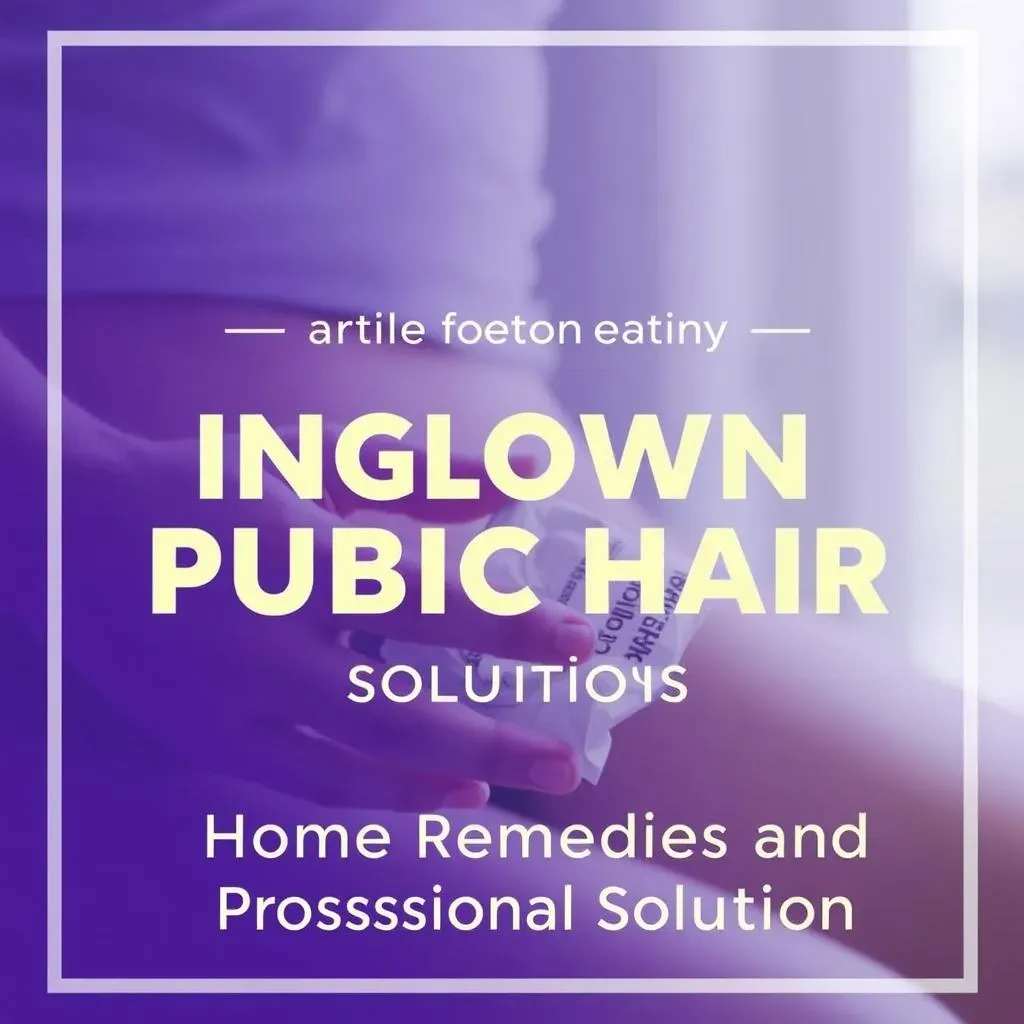
Treatment Options for Ingrown Pubic Hair: Home Remedies and Professional Solutions
Home Remedies for Ingrown Pubic Hair
For mild cases of ingrown pubic hair, home remedies can be effective in reducing inflammation and promoting healing. One of the simplest and most effective remedies is applying a warm compress to the affected area. Soak a clean cloth in warm water, wring it out, and apply it to the ingrown hair for 5-10 minutes. Repeat this process several times a day to help bring the hair to the surface, making it easier to remove.
Exfoliating the skin with a gentle scrub or a chemical exfoliant containing salicylic acid or glycolic acid can also help remove dead skin cells and promote hair growth in the correct direction. However, be cautious not to over-exfoliate, as this can irritate the skin and worsen the condition.
Remedy | Description | Frequency |
|---|---|---|
Warm compress | Apply warm, damp cloth to the affected area | Several times a day |
Exfoliation | Gently scrub the area with a mild exfoliant | 1-2 times a week |
Tea tree oil | Apply a few drops to reduce inflammation and prevent infection | 2-3 times a day |
Tea tree oil is another natural remedy that can be used to reduce inflammation and prevent infection. Mix a few drops of tea tree oil with a carrier oil like coconut or olive oil and apply it to the affected area. Remember to always do a patch test before using any new oils on your skin.
Professional Solutions for Ingrown Pubic Hair
In more severe cases or when home remedies are ineffective, professional solutions may be necessary. Laser hair removal is a popular option for removing ingrown pubic hair, as it reduces the risk of future occurrences. This method uses a laser to target and destroy the hair follicle, preventing regrowth.
Another professional treatment is electrolysis, which involves inserting a fine needle into the hair follicle and applying a small electrical charge to destroy the hair root. While this method is more time-consuming than laser hair removal, it can be effective for smaller areas.
- Laser hair removal: reduces hair regrowth, suitable for larger areas
- Electrolysis: destroys individual hair follicles, ideal for smaller areas
- Prescription creams: for severe cases, can help reduce inflammation and prevent infection
It's essential to consult a dermatologist or healthcare professional before undergoing any professional treatment. They will assess the severity of your ingrown pubic hair and recommend the most suitable treatment option. With the right approach, you can effectively remove ingrown pubic hair and prevent future occurrences.
Removing Ingrown Pubic Hair: Methods and Precautions to Avoid Further Irritation
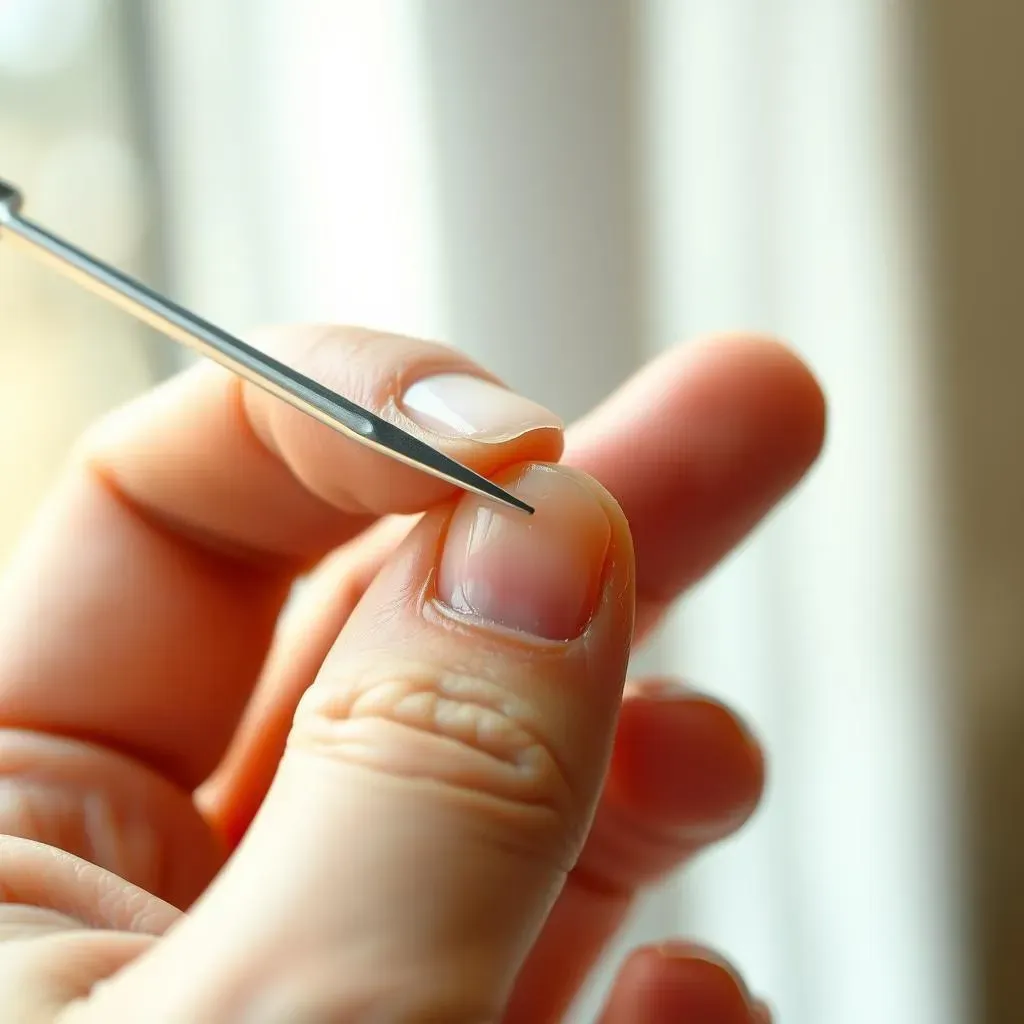
Removing Ingrown Pubic Hair: Methods and Precautions to Avoid Further Irritation
Methods for Removing Ingrown Pubic Hair
When it comes to removing ingrown pubic hair, it's essential to exercise caution to avoid further irritating the skin. One of the most effective methods is to let the hair grow out naturally. However, if the ingrown hair is causing significant discomfort or infection, it may be necessary to remove it. Before attempting to remove an ingrown pubic hair, make sure the area is clean and moisturized.
Gently exfoliate the skin around the ingrown hair using a gentle scrub or a chemical exfoliant containing alpha-hydroxy acids (AHAs) or beta-hydroxy acids (BHAs). This will help remove dead skin cells and promote hair growth in the correct direction. If the hair is close to the surface, you may be able to coax it out with a warm compress or a pair of clean tweezers.
Precautions to Avoid Further Irritation
Removing an ingrown pubic hair requires careful consideration to avoid pushing the hair further into the skin, causing more inflammation, or introducing bacteria into the follicle. Avoid using dull razors, as they can cause nicks and cuts, leading to infection. Instead, use a sharp razor and shave in the direction of hair growth, not against it.
When attempting to remove an ingrown hair, never force the hair out. Instead, gently tease it out with tweezers, and only if it's close to the surface. If the hair is deeply embedded, it's best to seek professional help to avoid causing more damage.
- Avoid picking or scratching the affected area, as this can lead to infection and scarring
- Don't share personal care items, such as razors or towels, to prevent the spread of infection
- Keep the area clean and moisturized to promote healing and reduce irritation
- Avoid tight clothing, which can cause friction and push the hair back into the skin
By taking these precautions, you can minimize the risk of further irritating the skin and promote healthy healing. Remember, if the ingrown hair becomes severely infected or doesn't respond to home remedies, it's crucial to seek medical attention.
Professional Help for Ingrown Pubic Hair Removal
In some cases, ingrown pubic hairs may require professional attention. If the hair is deeply embedded or the area is severely inflamed, consult a dermatologist or healthcare professional. They may prescribe antibiotic creams or oral antibiotics to treat the infection.
For persistent ingrown pubic hairs, laser hair removal or electrolysis may be recommended. These treatments can provide a more permanent solution by reducing hair regrowth and preventing future ingrown hairs.
While these professional solutions can be more expensive than home remedies, they offer a long-term solution for those struggling with recurrent ingrown pubic hairs. Be sure to consult with a qualified professional to determine the best course of treatment for your specific situation.
Preventing Ingrown Pubic Hair: Tips for Maintenance and Considerations for Laser Hair Removal at hairawaybylaser.com
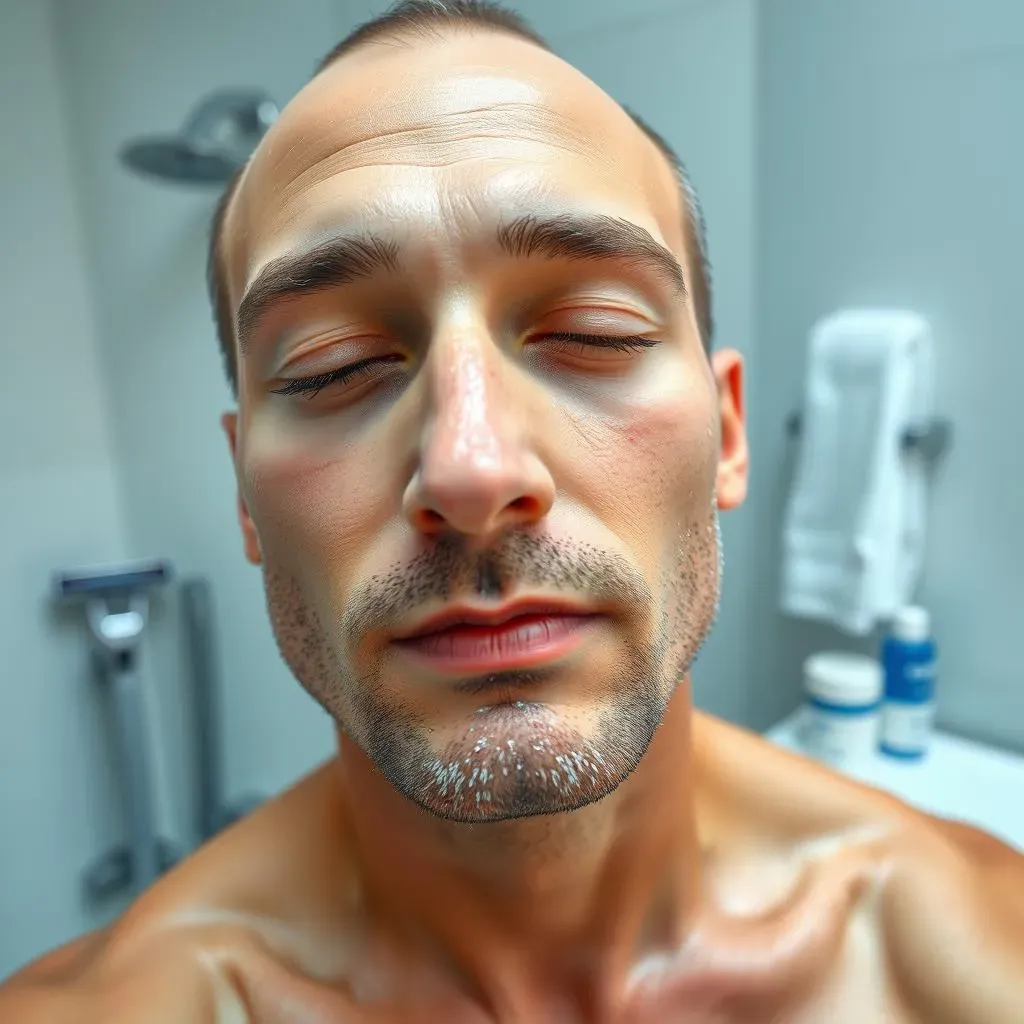
Preventing Ingrown Pubic Hair: Tips for Maintenance and Considerations for Laser Hair Removal at hairawaybylaser.com
Practicing Good Hygiene and Shaving Techniques
Preventing ingrown pubic hairs requires attention to personal hygiene and shaving techniques. Keeping the pubic area clean is essential, as dirt and bacteria can exacerbate ingrown hairs. Wash the area with a mild soap and lukewarm water, and pat it dry instead of rubbing vigorously.
When shaving, always use a sharp razor and shave in the direction of hair growth, not against it. This reduces the risk of cutting the hair at an angle, which can cause it to grow back into the skin. It's also important to replace razors regularly to prevent dull blades from causing nicks and cuts.
Shaving Tips | Description | Benefits |
|---|---|---|
Exfoliate before shaving | Remove dead skin cells to help hair grow out | Reduces ingrown hairs |
Shave in the direction of hair growth | Avoid cutting hair at an angle | Prevents ingrown hairs and razor burn |
Use a sharp razor | Prevents nicks and cuts | Minimizes risk of infection |
- Moisturize after shaving to keep the skin hydrated
- Avoid shaving over the same spot multiple times
- Consider using a shaving cream or gel to reduce friction
Alternative Hair Removal Methods
For those who experience frequent ingrown pubic hairs, alternative hair removal methods may be worth considering. Waxing, sugaring, and depilatory creams can be effective but may still cause ingrown hairs, especially if not done properly. Laser hair removal, offered by companies like hairawaybylaser.com, provides a more permanent solution by reducing hair regrowth and minimizing the risk of ingrown hairs.
Laser hair removal works by targeting the hair follicle with a laser beam, destroying it and preventing future hair growth. This method is particularly effective for those with thick or curly hair, as it reduces the likelihood of ingrown hairs. However, it's essential to find a qualified practitioner to ensure safe and effective treatment.
Alternative Hair Removal Methods | Description | Effectiveness |
|---|---|---|
Waxing | Removes hair from the root | Effective for 3-6 weeks |
Sugaring | Similar to waxing, but uses a sugar-based paste | Effective for 3-6 weeks |
Depilatory creams | Dissolves hair at the surface | Effective for 1-2 weeks |
Laser hair removal | Destroys hair follicle | Permanent reduction in hair growth |
- Consider consulting a dermatologist before starting laser hair removal
- Prepare for multiple sessions for optimal results
- Combine laser hair removal with good hygiene practices for best results
Conclusion: Taking Control of Ingrown Pubic Hair
Removing ingrown pubic hair requires patience, gentle care, and the right techniques. By understanding the causes and symptoms, exploring treatment options, and implementing preventative measures, you can effectively remove ingrown pubic hair and reduce the risk of future occurrences. Remember to prioritize your skin's health, and consider professional solutions like laser hair removal at hairawaybylaser.com for a more permanent solution. With the tips and strategies outlined in this article, you'll be well on your way to achieving smooth, healthy skin and saying goodbye to the discomfort of ingrown pubic hair. By following these steps, you can successfully remove ingrown pubic hair and maintain a confident, carefree lifestyle.
